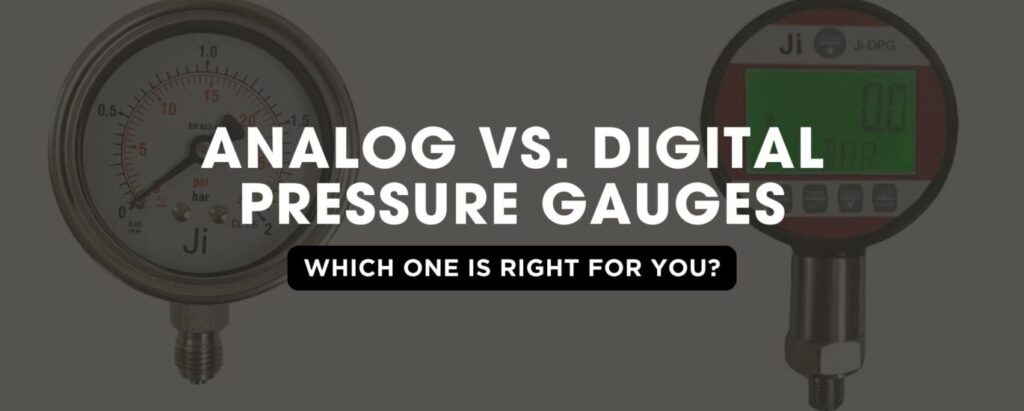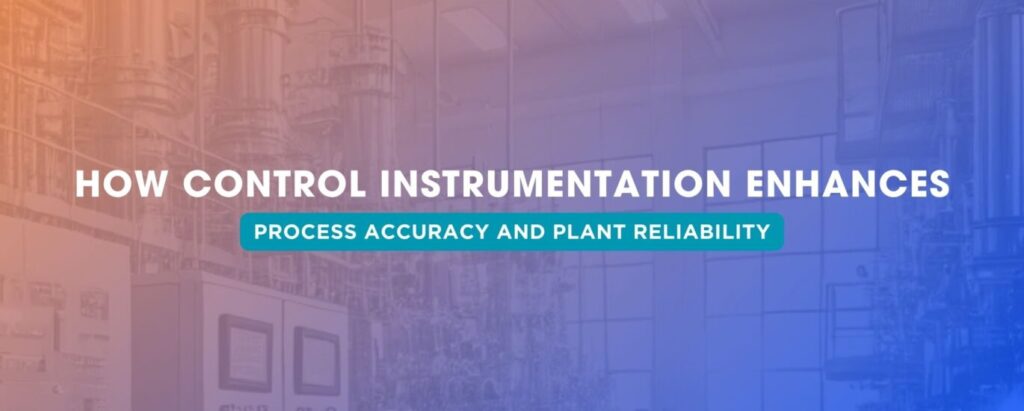Analog vs. Digital Pressure Gauges: Which One is Right for You?

Pressure gauges are essential instruments used across industries to measure and monitor pressure levels in systems and processes. Choosing the right pressure gauge can significantly impact operational efficiency, safety, and accuracy. With advancements in technology, the decision often boils down to selecting between analog and digital pressure gauges.
This blog aims to provide an in-depth comparison of analog and digital pressure gauges, covering their working principles, advantages, limitations, and applications. By understanding the unique features of each type, you can make an informed choice tailored to your specific requirements
Analog Pressure Gauges
How They Work
Analog pressure gauges use mechanical components like Bourdon tubes, diaphragms, or bellows to measure pressure. When pressure is applied to the sensing element, it deforms proportionally, driving a mechanical linkage that moves the pointer on a calibrated scale.
Advantages
- Simplicity
- Analog gauges are straightforward to use, with no need for power sources or complex configurations.
- Durability
- Mechanical construction ensures reliability in harsh environments, including extreme temperatures and vibrations.
- Cost-Effectiveness
- Typically more affordable than their digital counterparts, making them ideal for budget-conscious applications.
- Real-Time Visual Feedback
- The continuous movement of the pointer provides an intuitive understanding of pressure trends.
Limitations
- Limited Accuracy
- Analog gauges often have an accuracy range of 1% to 2% of full-scale deflection, which may not suffice for precision applications.
- Wear and Tear
- Mechanical components are prone to wear over time, leading to calibration drift.
- Lack of Data Recording
- Analog gauges do not offer data storage or connectivity, limiting their use in modern monitoring systems.
Applications
- HVAC systems
- Hydraulic and pneumatic systems
- Basic industrial processes
- Low-budget setups
Digital Pressure Gauges
How They Work
Digital pressure gauges use electronic sensors, such as strain gauges or piezoelectric sensors, to measure pressure. The sensor converts the pressure into an electrical signal, which is then processed and displayed on a digital screen.
Advantages
- High Accuracy
- Digital gauges offer superior accuracy, often within 0.1% to 0.5% of full-scale deflection.
- Data Recording and Connectivity
- Many models include features like data logging, wireless transmission, and integration with IoT systems.
- Ease of Reading
- Large digital displays make it easy to read precise measurements, even from a distance.
- Advanced Features
- Some digital gauges include alarms, programmable settings, and temperature compensation for enhanced functionality.
- Durability in Specific Models
- Advanced designs offer robust construction, making them suitable for challenging environments.
Limitations
- Higher Cost
- Digital gauges are generally more expensive than analog options, both in upfront and maintenance costs.
- Dependency on Power
- Digital gauges require batteries or external power sources, which may not be practical in some scenarios.
- Complexity
- Advanced features and settings can make digital gauges more challenging to operate for untrained personnel.
Applications
- Precision manufacturing
- Laboratory testing
- Oil and gas industry
- Automated systems
Key Factors to Consider When Choosing Between Analog and Digital Gauges
1. Accuracy Requirements
- If your application demands high precision (e.g., laboratory testing or critical industrial processes), digital gauges are the better choice.
- For general-purpose monitoring, analog gauges may suffice.
2. Environmental Conditions
- Analog gauges excel in harsh environments, such as high temperatures, vibrations, and corrosive atmospheres.
- Digital gauges are ideal for controlled environments where power sources are readily available.
3. Budget
- Analog gauges are cost-effective, making them suitable for large-scale deployment in less critical applications.
- Digital gauges, while more expensive, provide long-term value in terms of accuracy and advanced features.
4. Data Requirements
- Choose digital gauges if you require data logging, remote monitoring, or integration with digital systems.
- Analog gauges are suitable for applications where real-time visual monitoring is sufficient.
5. Maintenance and Longevity
- Analog gauges require periodic calibration and may wear out over time.
- Digital gauges require battery replacement and may involve higher maintenance costs for advanced features.
Analog vs. Digital: Side-by-Side Comparison
| Feature | Analog Gauges | Digital Gauges |
|---|---|---|
| Accuracy | 1%-2% | 0.5%-0.05% |
| Cost | Low | High |
| Ease of Use | Simple | Complex (in advanced models) |
| Power Requirement | None | Battery/External Power |
| Durability | High (mechanical stress) | High (in advanced models) |
| Data Logging | No | Yes |
| Connectivity | No | Yes |
| Environmental Suitability | Extreme Conditions | Controlled Environments |
Innovations in Pressure Gauge Technology
1. Hybrid Gauges
- Combine analog and digital features, offering the best of both worlds. For instance, a hybrid gauge may feature an analog dial with a digital readout for precision.
2. Wireless Digital Gauges
- Advanced digital gauges with wireless capabilities allow remote monitoring and integration into IoT platforms.
3. Smart Gauges
- Equipped with AI and predictive analytics to anticipate maintenance needs and optimize system performance.
4. Eco-Friendly Designs
- Manufacturers are now focusing on sustainable materials and energy-efficient designs in both analog and digital gauges.




